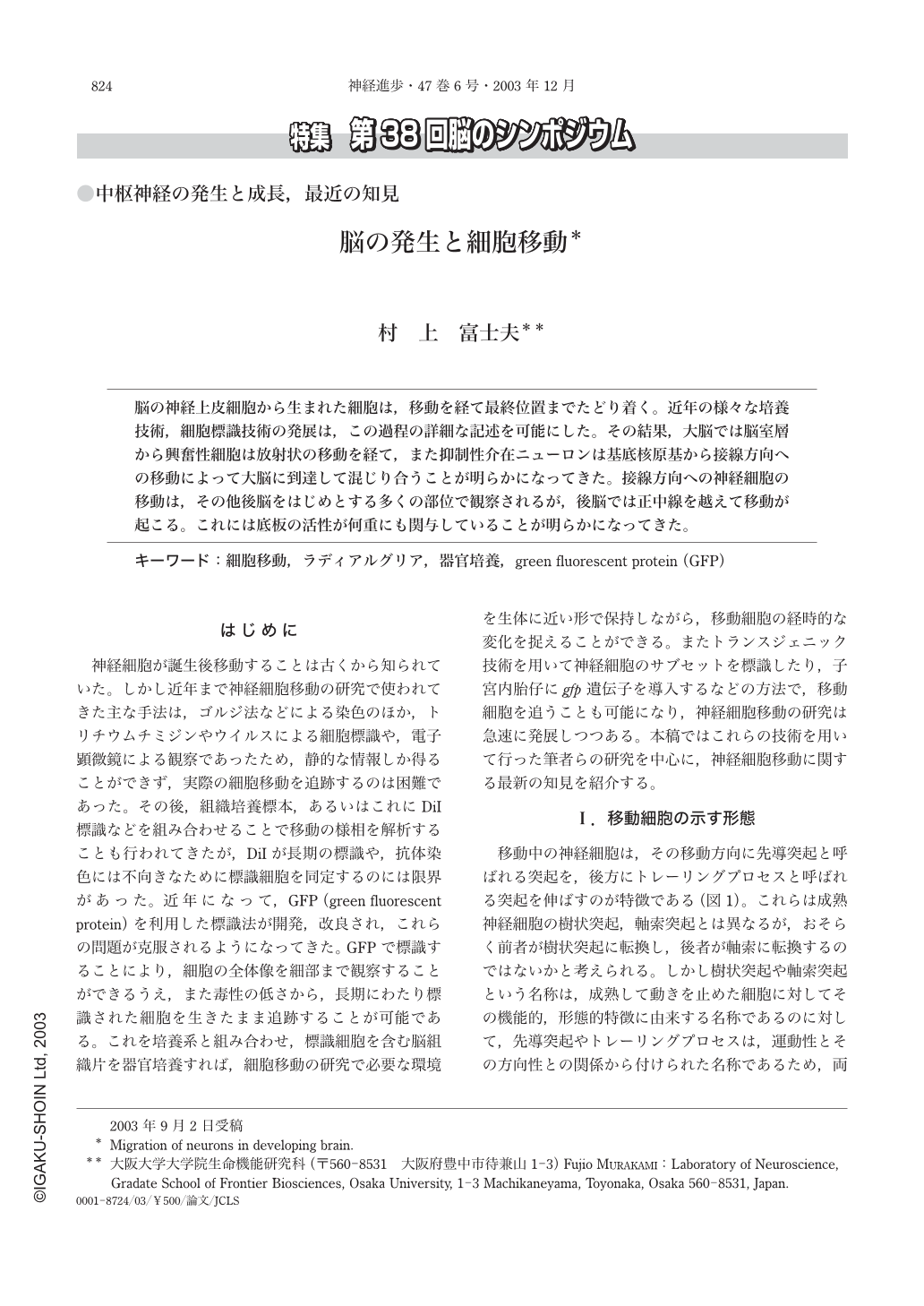Japanese
English
- 有料閲覧
- Abstract 文献概要
- 1ページ目 Look Inside
脳の神経上皮細胞から生まれた細胞は,移動を経て最終位置までたどり着く。近年の様々な培養技術,細胞標識技術の発展は,この過程の詳細な記述を可能にした。その結果,大脳では脳室層から興奮性細胞は放射状の移動を経て,また抑制性介在ニューロンは基底核原基から接線方向への移動によって大脳に到達して混じり合うことが明らかになってきた。接線方向への神経細胞の移動は,その他後脳をはじめとする多くの部位で観察されるが,後脳では正中線を越えて移動が起こる。これには底板の活性が何重にも関与していることが明らかになってきた。
はじめに
神経細胞が誕生後移動することは古くから知られていた。しかし近年まで神経細胞移動の研究で使われてきた主な手法は,ゴルジ法などによる染色のほか,トリチウムチミジンやウイルスによる細胞標識や,電子顕微鏡による観察であったため,静的な情報しか得ることができず,実際の細胞移動を追跡するのは困難であった。その後,組織培養標本,あるいはこれにDiI標識などを組み合わせることで移動の様相を解析することも行われてきたが,DiIが長期の標識や,抗体染色には不向きなために標識細胞を同定するのには限界があった。近年になって,GFP(green fluorescent protein)を利用した標識法が開発,改良され,これらの問題が克服されるようになってきた。GFPで標識することにより,細胞の全体像を細部まで観察することができるうえ,また毒性の低さから,長期にわたり標識された細胞を生きたまま追跡することが可能である。これを培養系と組み合わせ,標識細胞を含む脳組織片を器官培養すれば,細胞移動の研究で必要な環境を生体に近い形で保持しながら,移動細胞の経時的な変化を捉えることができる。またトランスジェニック技術を用いて神経細胞のサブセットを標識したり,子宮内胎仔に gfp 遺伝子を導入するなどの方法で,移動細胞を追うことも可能になり,神経細胞移動の研究は急速に発展しつつある。本稿ではこれらの技術を用いて行った筆者らの研究を中心に,神経細胞移動に関する最新の知見を紹介する。
During development, postmitotic neurons migrate from their site of origin to their final destinations. Recent progress of in vitro and in vivo labelling of neurons has allowed direct observations of migrating neurons. In the forebrain, it has been clearly demonstrated that excitatory neurons in the cerebral cortex originate from the ventricular zone of the pallium and radially migrate towards the pial surface, while inhibitory local-circuit neurons originate from the subpallium and migrate tangentially toward the cortex. These two subsets of neurons are mixed up in the cerebral cortex. Tangential migration of neurons takes place in many other places. In the hindbrain, rhombic lip-derived precerebellar neurons migrate tangentially and a subset of lower rhombic lip-derived neurons translocate tangentially across the ventral midline. We developed an in vitro preparation that enables visualization of migrating lower rhombic lip-derived precerebellar neurons. We showed that, while they are attracted by the ventral midline floor plate(FP)on the ipsilateral side, they lose their responsiveness to the FP attractive cues on the contralateral side. We also found that they attractively respond to the alar plate after crossing the FP. Taken together, these results identify crucial roles of changes in cell responsiveness to the several guidance cues in the transmedian migration of precerebellar neurons.

Copyright © 2003, Igaku-Shoin Ltd. All rights reserved.


